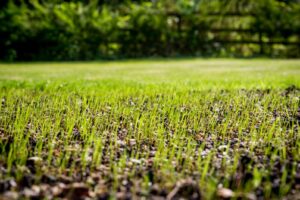
In the elaborate web of modern-day industry and logistics, the unassuming heroes of cloth cope with staying the unsung champions of performance. Among those uncelebrated workhorses, material conveyor belts stand tall, bearing the burden of endless products, and making sure the clean waft of substances.
Beyond their humble appearance lies a world of innovation, durability, and sustainability that has redefined the landscape of cloth management.
The Fabric Conveyor Belt: A Quiet Revolution
The material conveyor belt represents a quiet revolution in fabric management. Unlike its heavy responsibility opposite numbers solid from steel or rubber, cloth conveyor belts are constituted of layers of woven fabric materials, together with cotton, nylon, polyester, and aramid.
These layers are skillfully woven together and covered to create a resilient and bendy conveyor belt, able to withstand the trials of numerous business applications. For more in-depth information on fabric conveyor belts, check this site.
Innovation: The Driving Force
Innovation is the heartbeat of the material conveyor belt industry. It is the pressure in the back of the non-stop development and evolution of these unassuming workhorses. Let’s explore some key areas of innovation that have propelled cloth conveyor belts into the forefront of fabric handling solutions:
Advanced Materials:
The quest for advanced performance has caused the improvement of advanced material materials with higher tensile electricity and wear resistance. These materials ensure that conveyor belts can withstand heavy masses and undergo hard-working situations.
Specialized Coatings:
Innovative coatings have been engineered to decorate belt durability and functionality. These coatings can improve resistance to abrasion, chemicals, and intense temperatures, extending the carrier life of the conveyor belt.
Cleat and Profile Designs:
Innovative cleat and profile designs have been delivered to optimize fabric dealing within one-of-a-kind industries. These designs provide a better grip on materials and reduce spillage, contributing to stepped-forward performance.
Smart Conveyor Belts:
The integration of sensors and tracking systems has given rise to smart conveyor belts that offer actual-time information on belt overall performance. These systems enable predictive maintenance, reducing downtime and improving typical operational efficiency.
Energy-Efficient Designs:
Conveyor belt manufacturers are increasingly focused on strength-green designs, utilizing lightweight materials and efficient power structures. This no longer best reduces operational charges but additionally aligns with sustainability goals.
Durability: Withstanding the Test of Time
Durability is a cornerstone of fabric conveyor belts. These belts are designed to face up to the harshest conditions and endure years of non-stop operation. Some key factors in their sturdiness consist of:
High Tensile Strength:
Fabric conveyor belts are known for their excessive tensile strength, ensuring they can deal with heavy masses without stretching or breaking.
Resistance to Wear and Tear:
Advanced materials and coatings make those belts exceedingly proof against abrasion and wear, even in industries with challenging environments.
Low Maintenance:
Their durability translates into low renovation necessities, lowering downtime and preservation charges for agencies.
Product Integrity:
Gentle coping guarantees that sensitive products hold their integrity all through the material dealing with the process, minimizing product damage.
Sustainability: Navigating the Green Path
Sustainability has come to be a primary awareness in cutting-edge industries, and cloth conveyor belts are not exempt from this fashion. The conveyor belt industry is actively running to lessen its environmental footprint in numerous methods:
Energy Efficiency:
Lightweight substances and green pressure structures limit electricity consumption, reducing the carbon footprint of material managing operations.
Recyclability:
Conveyor belt manufacturers are exploring substances that are greater and easily recyclable, promoting a round financial system.
Reduced Waste:
Conveyor belts are designed to close longer, lowering the need for common replacements and the technology of waste.
Cleaner Production:
In industries like meals and prescription drugs, conveyor belts are designed with cleanliness and sanitation in mind, reducing the need for water-in-depth cleansing procedures.
In a global wherein innovation drives development and sustainability is a shared responsibility, fabric conveyor belts stand as a testimony to the ability for positive change in cloth dealing. They are not just conveyors; they are the quiet champions of innovation, sturdiness, and sustainability that hold our industries in motion even as they tread gently on the earth.
Conclusion: The Unsung Heroes of Material Handling
Fabric conveyor belts are the unsung heroes of modern-day cloth handling. Their innovation, durability, and sustainability lead them to be essential in a huge range of industries. These belts ensure the seamless flow of materials, make a contribution to product integrity, and play a crucial role in improving performance and productivity.






